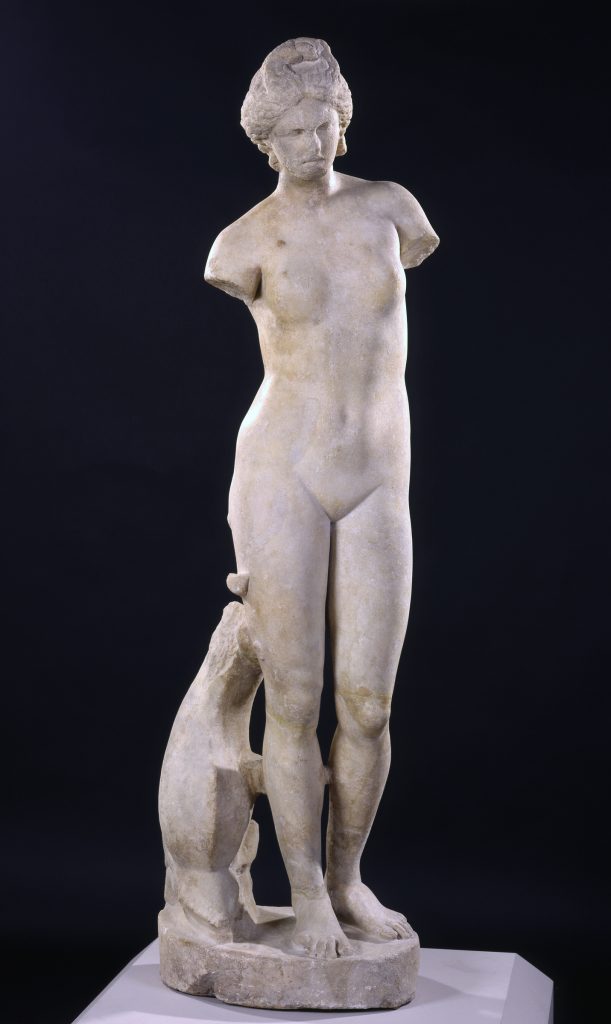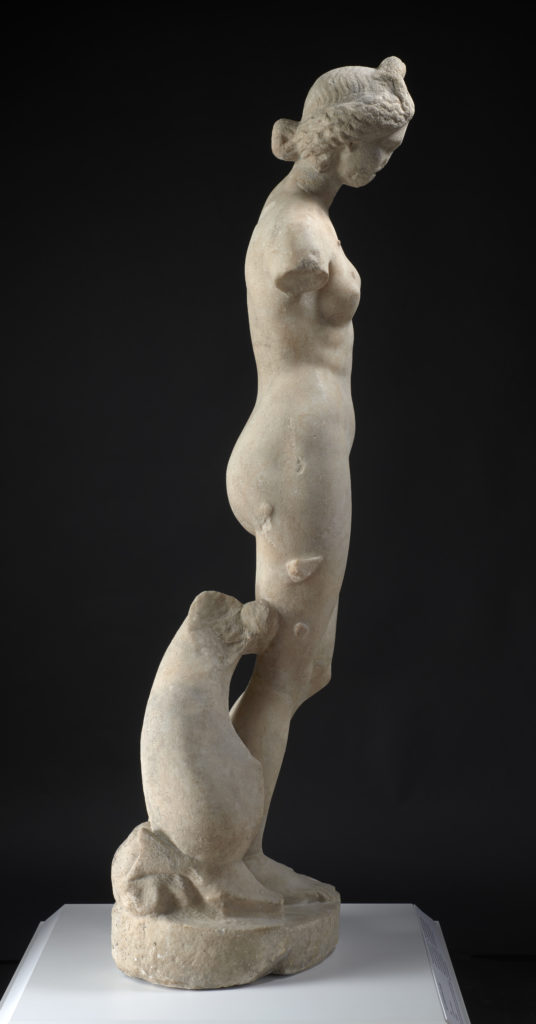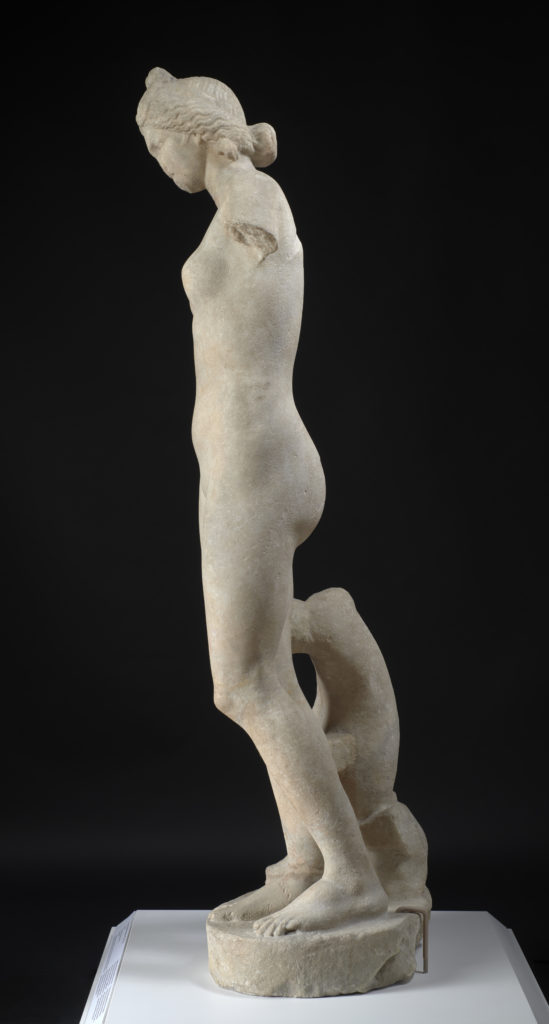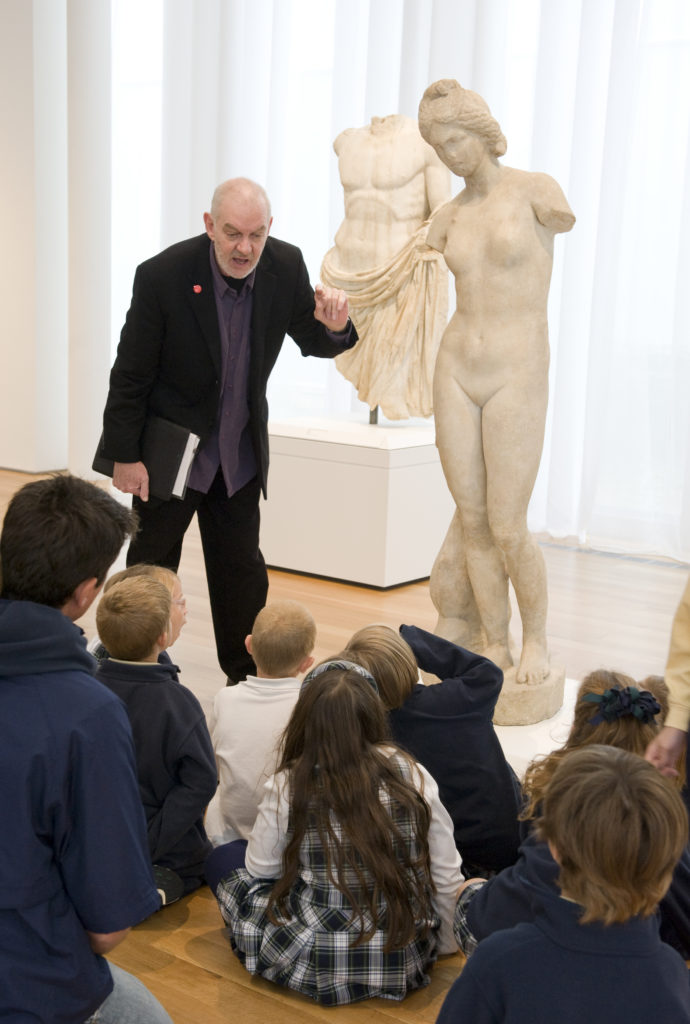Aphrodite Anadyomene (Cyrene type) (work of art)
Artwork Info
Key Ideas
- This is a statue of Aphrodite, the ancient Greek goddess of love and beauty. In Roman mythology this goddess is known as Venus.
- Classical sculptures of human figures often have broken or missing arms because the arms are so fragile. While this statue of Aphrodite is missing both arms, archaeologists and historians are able to determine how her arms were positioned by studying similar statues and by looking for clues (such as the position of her shoulders and the remaining pieces of her hair) on this statue.
- The statue depicts the birth of Aphrodite as she rises from the sea. This mythological origin of the goddess gives her the epithet Anadyomene (anna-die-oh-meen), meaning “rising from the sea” in ancient Greek. Even though there is no depiction of the sea itself on the statue, it is symbolized by the dolphin figure and the gesture of Aphrodite’s missing arms.
- During the Renaissance, Italian painter Sandro Botticelli interpreted the myth of Aphrodite’s sea birth and created the famous painting The Birth of Venus.
- The depiction of Aphrodite in this pose and style is associated with the city of Cyrene by modern historians because the first statue of this type was found there in 1913. Located in North Africa, Cyrene was an early Greek colony. During the Hellenistic period (323–30 B.C.E.), Cyrene became the “intellectual center” of the classical world.
Learn More
According to Greek mythology, Aphrodite, the goddess of love and beauty (known to the Romans as Venus), was born from the sea. The dolphin figure beside her represents the sea. Aphrodite is connected with Cyrene, a city in North Africa, through a similar statue that was found there in 1913. That statue was the first “Cyrene type” statue to be discovered, so scholars have given this name to similar statues that were discovered later.
On human-figure statues, arms are delicate features that break easily. Archaeologists and historians believe that both of Aphrodite’s missing arms were bent at the elbow. Her right hand was likely holding a strand of hair that fell to her breast; a trace of the strand of hair can be seen on this statue. Her left hand likely held a lock of hair that fell just behind her left ear. Fixing her hair (or squeezing the water out of it) is an appropriate gesture for the goddess as she rises from the sea. Many examples of this type of Aphrodite statue, known by the Greek term Anadyomene, still exist.
In addition to the myth of Aphrodite’s birth from the sea, there are other versions of her origin story. The Greek author and poet Homer attributes her birth to her parents, Zeus and Dione. Aphrodite’s origin is most often associated with the island of Cyprus, located south of Turkey and west of Syria and Lebanon.
tags: proportion, balance, mythology, Ancient Rome, identity, change, communication, meaning
Additional Resources
Resources for Teachers:
- View another Cyrene-type statue of Aphrodite.
- Read about Aphrodite. This website provides detailed studies of Greek gods, goddesses, and mythological creatures.
- Explore a website that explains the marble-carving process in detail.
Resources for Students:
- Read an article about Aphrodite and other Olympian gods.
- Learn about the geography of Greece and its influence on Greek mythology.
- Watch a short video about the city of Cyrene.




